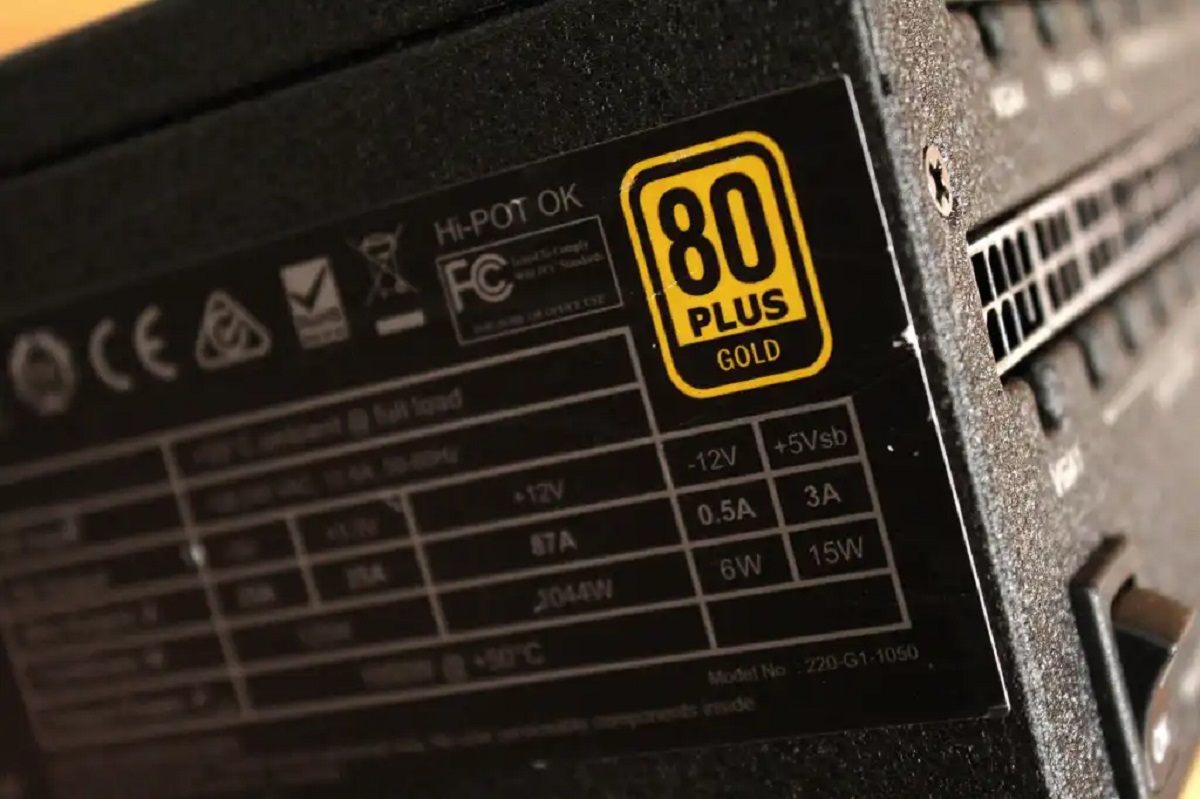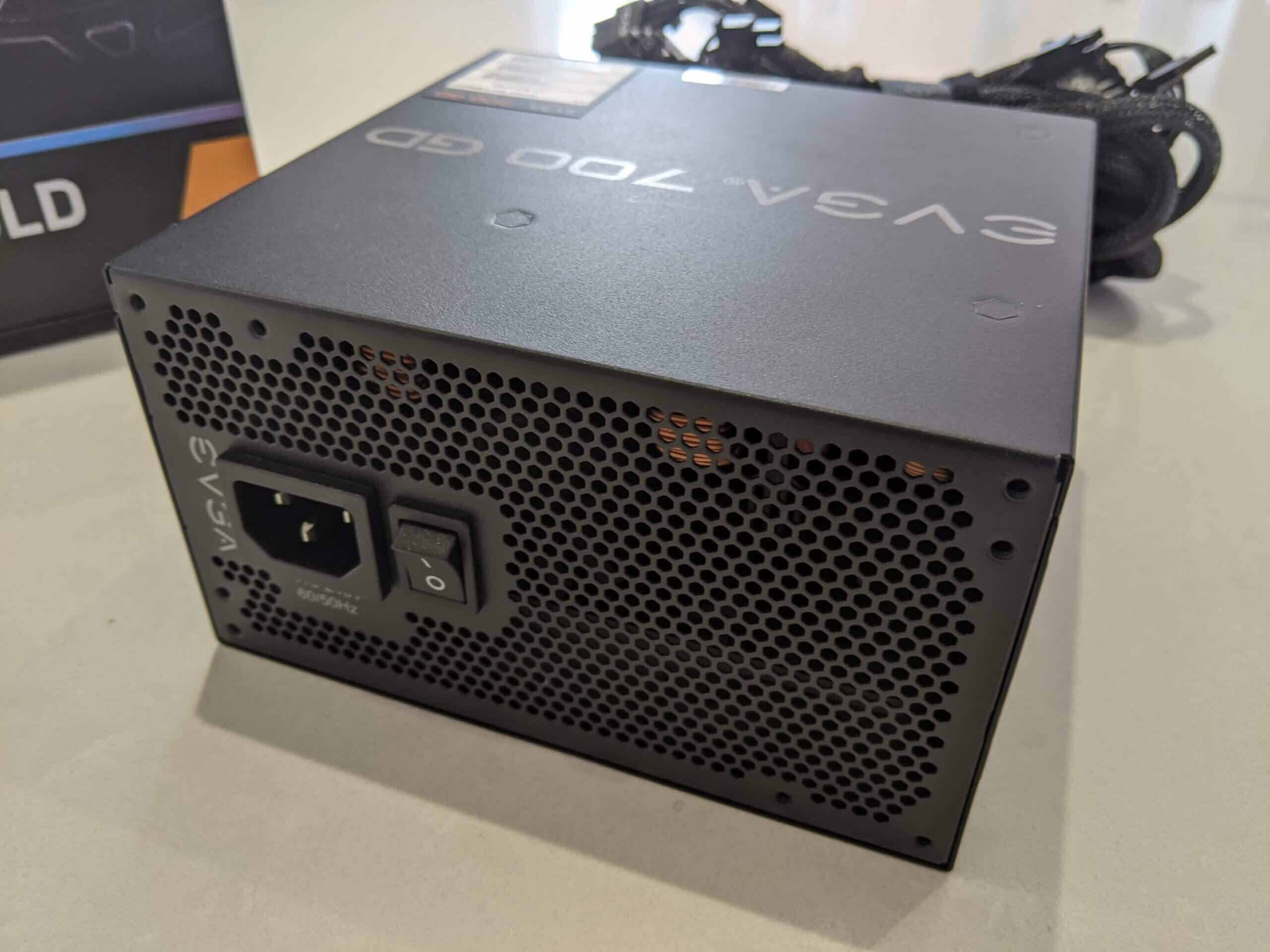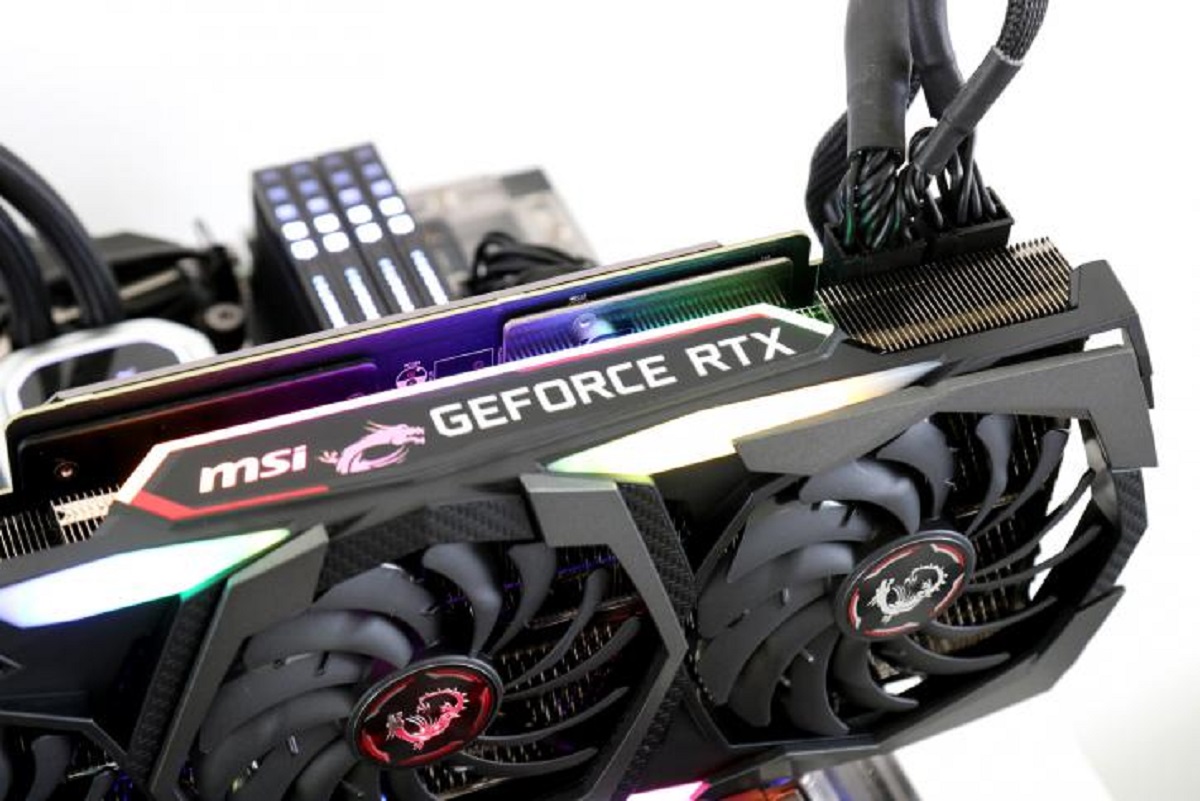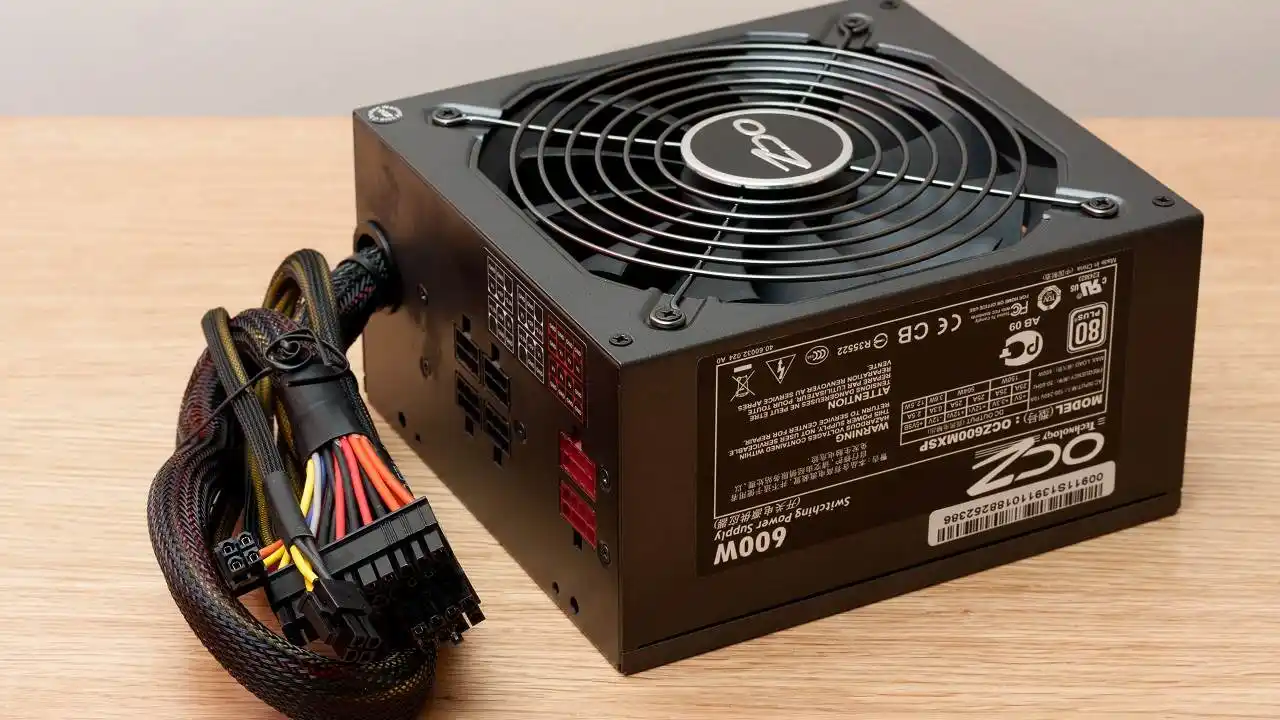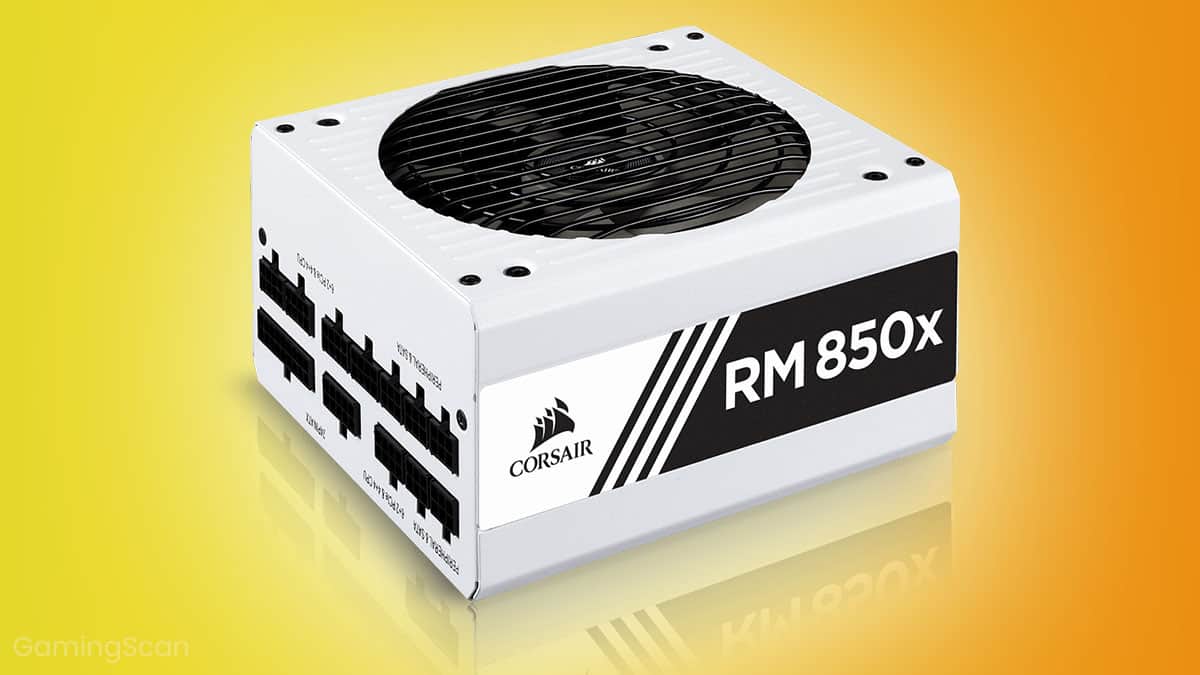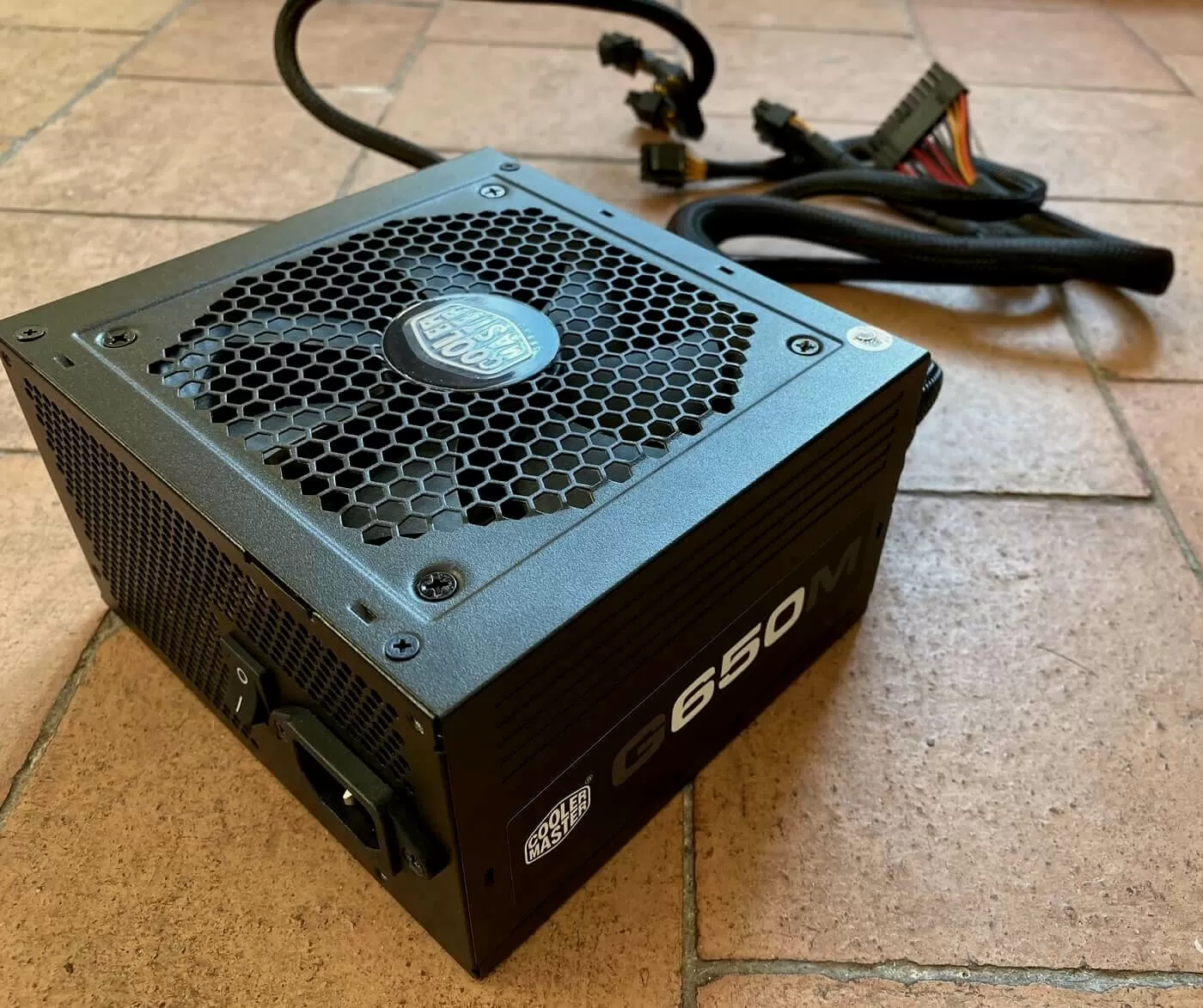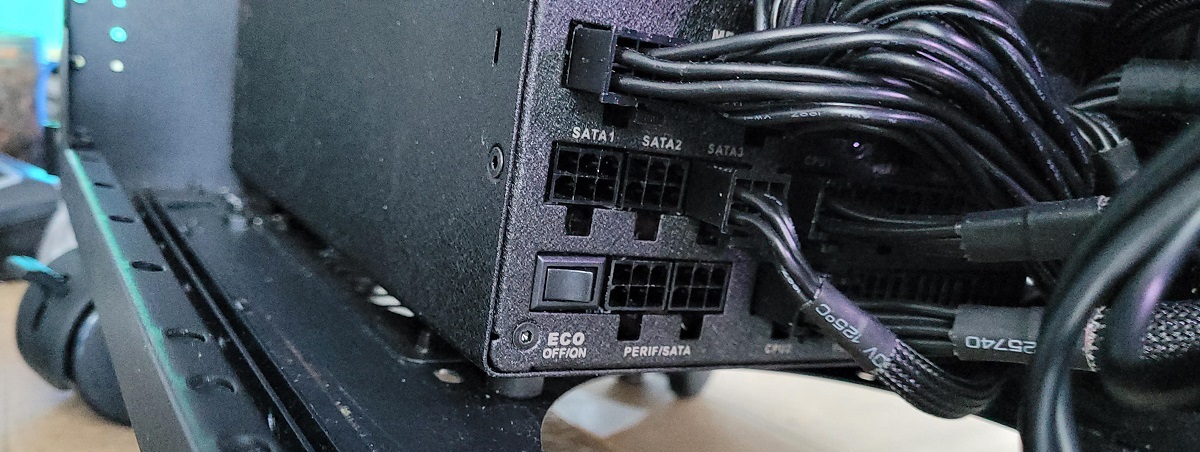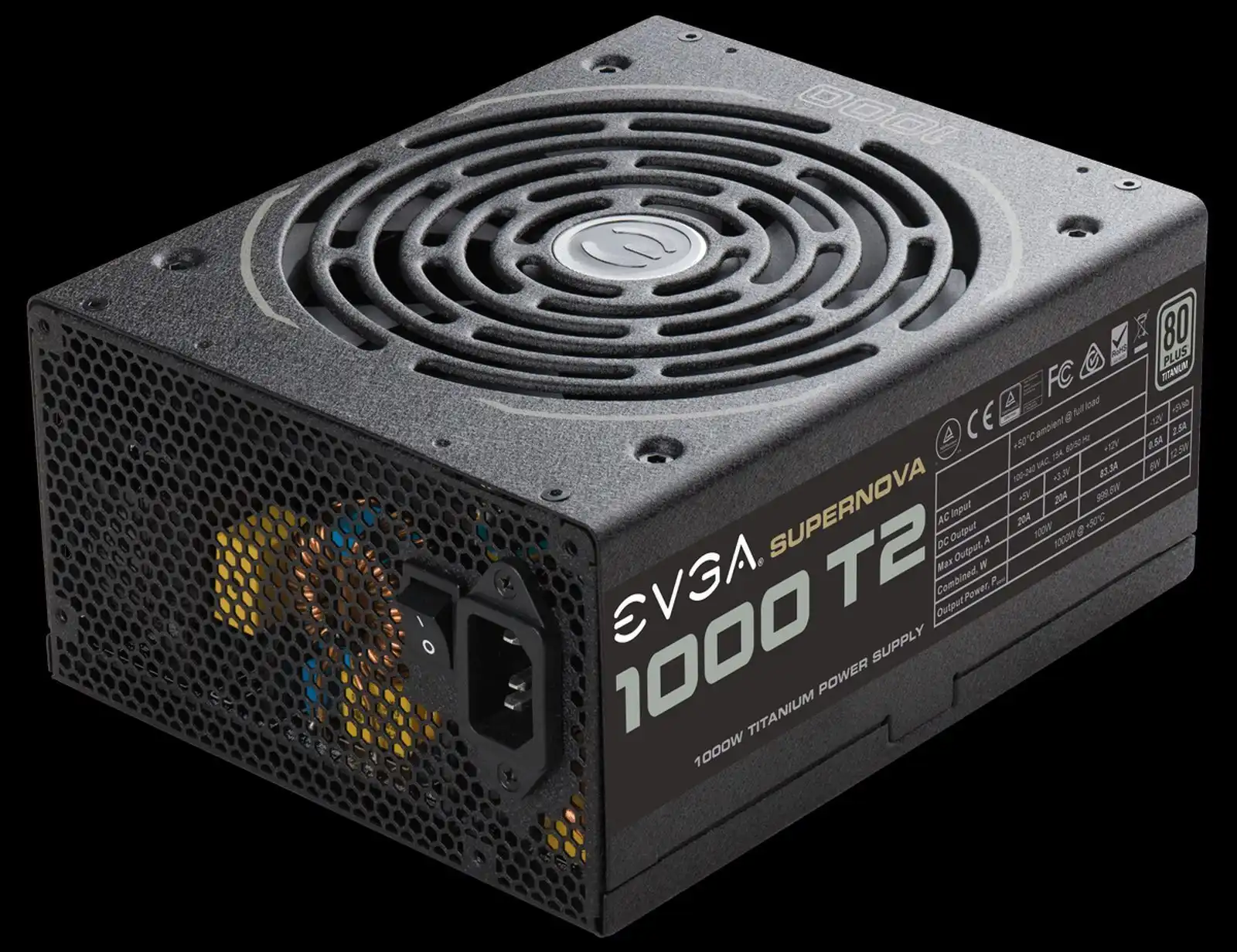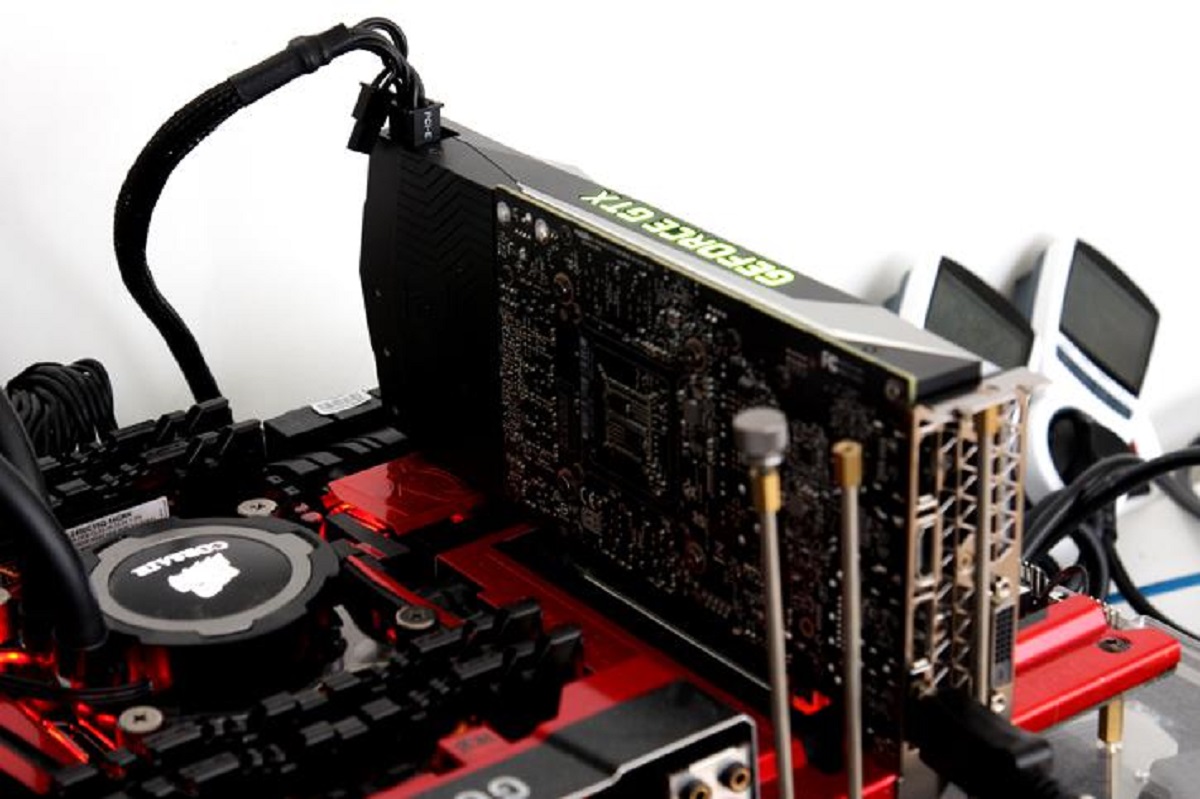Introduction
In today’s world, where digital devices have become an essential part of our lives, ensuring a stable and efficient power supply is imperative. The efficiency of a power supply unit (PSU) plays a crucial role in delivering the required power to your electronic devices while minimizing energy wastage. Understanding and selecting the right PSU with high efficiency is key to optimizing energy usage, reducing your electricity bill, and prolonging the lifespan of your devices.
PSU efficiency refers to the ratio of the output power provided by the PSU to the input power it draws from the electrical outlet. It is commonly expressed as a percentage. The higher the efficiency rating, the more effectively the PSU converts the input power into usable energy without unnecessary loss.
While it may seem like a technical topic, PSU efficiency is relevant for all users, whether you are building a gaming rig, setting up a home office, or operating a server farm. By investing in a power supply with high efficiency, you can have peace of mind knowing that your devices are receiving clean and stable power, which leads to enhanced performance and reliability.
Throughout this article, we will explore the importance of PSU efficiency, how it is measured, the different power efficiency ratings to look out for, as well as tips for choosing a power supply that meets your needs. Understanding these concepts will empower you to make informed decisions when it comes to selecting a PSU that not only meets your power requirements but also offers optimal efficiency.
So, let’s dive into the world of PSU efficiency and discover how it can benefit you and your devices.
What is PSU Efficiency?
PSU efficiency refers to the ability of a power supply unit to convert the input power it receives from the electrical outlet into usable power for your electronic devices. It is a measure of how effectively the PSU converts the incoming AC power into the DC power required by your devices, such as your computer, gaming console, or server.
PSU efficiency is expressed as a percentage and represents the ratio of the output power to the input power. For example, if a power supply has an efficiency rating of 85%, it means that 85% of the input power is converted into usable energy, while the remaining 15% is lost as heat or wasted energy.
Efficiency is an essential factor to consider when choosing a power supply because a higher efficiency level means that less power is wasted in the conversion process. By minimizing energy loss, efficient power supplies not only save electricity but also run cooler and produce less noise. This has several benefits, including lower electricity bills, reduced environmental impact, and improved overall system performance.
It’s important to note that PSU efficiency is not a fixed value and can vary depending on the load placed on the power supply. Most power supplies operate most efficiently within a specific load range, typically between 50% and 80% of their maximum rated capacity. Therefore, it’s crucial to consider your power requirements when choosing a PSU to ensure it operates near its peak efficiency under typical usage scenarios.
Manufacturers often provide efficiency curves that show the PSU’s efficiency levels at different load percentages. These curves can help you determine the optimal load for your power supply and make an informed decision based on your expected usage patterns.
Now that we understand what PSU efficiency is and why it matters, let’s delve into the importance of PSU efficiency and how it can benefit you.
Why is PSU Efficiency Important?
PSU efficiency is an essential consideration when selecting a power supply for your electronic devices. Here are a few key reasons why PSU efficiency is important:
- Energy Savings: Higher PSU efficiency means less wasted energy in the form of heat. By choosing a power supply with a higher efficiency rating, you can significantly reduce your energy consumption and save money on your electricity bill over time. This is especially beneficial for devices that operate for long periods or constantly remain on, such as servers or gaming systems.
- Environmental Impact: Inefficient power supplies not only waste electricity, but they also contribute to increased carbon footprint. Opting for a PSU with higher efficiency helps minimize energy waste, reducing the strain on natural resources and lowering greenhouse gas emissions. By being mindful of PSU efficiency, you can make a positive impact on the environment.
- System Stability and Reliability: Power supplies with higher efficiency levels provide a clean and stable power output to your devices. This stability is crucial for the proper functioning and longevity of sensitive components, such as processors, graphics cards, and other internal hardware. A stable power supply ensures consistent performance and reduces the risk of hardware failures due to voltage fluctuations or power surges.
- Cooling and Noise: Efficient power supplies generate less heat during operation. As a result, they require less cooling, allowing for quieter and more efficient cooling systems. A power supply that runs cooler not only extends its lifespan but also contributes to a quieter and more comfortable computing environment.
- Future-Proofing: Investing in a power supply with high efficiency ensures compatibility with future hardware upgrades. As technology advances, power requirements for components may increase. By selecting a power supply with ample headroom and excellent efficiency, you can accommodate future upgrades without having to replace the power supply.
Considering these factors, it becomes evident that PSU efficiency is not just a technical consideration but a crucial aspect that impacts energy consumption, system stability, environmental sustainability, and overall user experience. Now that we understand the importance of PSU efficiency, let’s explore how efficiency is measured and the different power efficiency ratings to look out for.
How is PSU Efficiency Measured?
PSU efficiency is measured using a standardized testing process that evaluates the power supply’s efficiency at various load levels. The most common method for measuring PSU efficiency is the 80 PLUS certification program, which defines efficiency ratings based on the percentage of power drawn from the electrical outlet that is actually delivered to the device.
The 80 PLUS program categorizes PSUs into different efficiency levels, including 80 PLUS, 80 PLUS Bronze, 80 PLUS Silver, 80 PLUS Gold, 80 PLUS Platinum, and 80 PLUS Titanium. These ratings indicate how efficiently the PSU operates under different load conditions.
To measure the efficiency, the power supply is tested at different load levels, ranging from 20% to 100% of its maximum rated capacity. The power output is measured, and the input power drawn from the electrical outlet is also recorded. The efficiency percentage is then calculated as the output power divided by the input power, multiplied by 100.
For example, if a power supply unit delivers 400 watts of power to the system while drawing 480 watts from the electrical outlet, the efficiency would be calculated as (400/480) * 100 = 83.3%. This means that 83.3% of the input power is converted into usable energy, while the remaining 16.7% is wasted.
The 80 PLUS certification program sets minimum efficiency requirements for each efficiency level. For example, a PSU with the 80 PLUS Bronze certification must achieve at least 82% efficiency at a 20% load, 85% efficiency at a 50% load, and 82% efficiency at a 100% load. Higher certification levels require higher levels of efficiency at each load level.
It’s important to note that while the 80 PLUS certification is the most prevalent standard for measuring PSU efficiency, there are other international standards and certifications, such as the ENERGY STAR program, that also provide efficiency guidelines for power supplies.
Understanding the measurement of PSU efficiency and the different certification levels allows consumers to compare power supplies and make informed decisions based on their specific needs and budget. Next, we will explore the power efficiency ratings defined by the 80 PLUS certification program.
Understanding Power Efficiency Ratings
The power efficiency ratings defined by the 80 PLUS certification program provide a standardized way to evaluate the efficiency of power supply units (PSUs). These ratings indicate how efficiently a PSU converts the incoming AC power into usable DC power for your devices, allowing you to make informed decisions when choosing a power supply. Let’s explore the different power efficiency ratings:
- 80 PLUS: The base certification level requires a PSU to have a minimum efficiency of 80% or higher at 20%, 50%, and 100% of its maximum rated load. It sets the foundation for higher efficiency standards and ensures a level of efficiency that surpasses traditional power supplies.
- 80 PLUS Bronze: This certification requires a minimum efficiency of 82%, 85%, and 82% at 20%, 50%, and 100% load respectively. Bronze-rated PSUs offer improved efficiency compared to the basic 80 PLUS level and provide a good balance between affordability and efficiency.
- 80 PLUS Silver: Silver-rated PSUs have an efficiency of at least 85%, 88%, and 85% at the same load levels as Bronze-rated PSUs. They offer a higher level of efficiency and are often preferred by users who value energy efficiency and want to reduce power consumption.
- 80 PLUS Gold: Gold-rated PSUs provide even higher efficiency, requiring a minimum efficiency of 87%, 90%, and 87% at 20%, 50%, and 100% load respectively. Gold-rated PSUs are popular among enthusiasts, gamers, and professionals who demand high reliability and performance coupled with energy efficiency.
- 80 PLUS Platinum: Platinum-rated PSUs are designed for enthusiasts and professionals who require exceptional efficiency. These PSUs must have an efficiency of at least 90%, 92%, and 89% at the same load levels. They are more expensive but offer superior energy-saving capabilities and reduced operating costs.
- 80 PLUS Titanium: Titanium-rated PSUs represent the pinnacle of efficiency, requiring a minimum efficiency of 90%, 94%, and 90% at 20%, 50%, and 100% load respectively. These PSUs are the most energy-efficient and are ideal for demanding workstations, servers, or high-performance gaming rigs where every watt counts.
It’s important to note that while higher efficiency levels typically come with a higher price tag, the long-term energy savings and benefits make them a worthwhile investment. The specific power efficiency rating you choose will depend on your budget, the intended usage of the PSU, and your desire to achieve maximum energy efficiency.
Understanding the different power efficiency ratings allows you to compare PSUs and select the one that aligns with your power requirements and efficiency goals. In the next section, we will explore the benefits of choosing a power supply with high efficiency.
Benefits of a High PSU Efficiency
Choosing a power supply unit (PSU) with high efficiency offers several significant benefits. Let’s explore the advantages of opting for a power supply with high efficiency:
- Energy Savings: One of the most significant benefits of a high PSU efficiency is reduced energy consumption. Power supplies with high efficiency convert a larger percentage of the input power into usable energy, minimizing energy waste. This leads to lower electricity bills, especially for systems that operate for extended periods or remain powered on constantly, such as servers or gaming rigs.
- Environmental Impact: High PSU efficiency not only benefits your wallet but also contributes to a greener environment. By consuming less electricity, power supplies with high efficiency help reduce carbon emissions and lower overall energy demand. This promotes sustainability and is a step towards a more eco-friendly computing setup.
- Improved System Performance and Stability: Efficient power supplies deliver clean and stable power to your electronic devices. This stability is vital for the proper functioning and longevity of sensitive components such as processors, graphics cards, and storage devices. A high-quality power supply ensures a consistent and reliable power output, reducing the risk of voltage fluctuations, power surges, and system crashes.
- Reduced Heat Generation and Noise: Power supplies with high efficiency generate less heat during operation. This not only contributes to a cooler and more comfortable operating environment but also reduces the strain on cooling systems. With lower heat generation, the cooling fans of the power supply and other components can operate at lower speeds, resulting in quieter overall system operation.
- Compatibility and Future-Proofing: Investing in a power supply with high efficiency allows for future hardware upgrades while maintaining optimal performance. As technology advances, components may require higher power demands. A power supply with ample headroom and excellent efficiency ensures compatibility with upgraded components without the need to replace the power supply.
- Longer Lifespan: Efficient power supplies typically have better build quality and components. This translates to a longer lifespan and improved reliability. By investing in a high-quality PSU with high efficiency, you can expect it to serve you for many years, reducing the need for frequent replacements.
By considering these benefits, it is evident that choosing a power supply with high efficiency is a wise investment. Not only will it save you money on energy bills, but it will also contribute to a more sustainable and reliable computing setup. Next, we will explore the factors that can impact PSU efficiency.
Factors That Affect PSU Efficiency
While power supply unit (PSU) efficiency is an important consideration, it can be influenced by several factors. Understanding these factors can help you make informed decisions when selecting a power supply for your electronic devices. Let’s explore the key factors that can affect PSU efficiency:
- Load Level: The efficiency of a PSU is influenced by the load placed on it. PSUs typically operate most efficiently within a specific load range, usually between 50% and 80% of their maximum rated capacity. Operating a PSU below or above this range can result in lower efficiency levels. It is crucial to select a power supply that matches the power requirements of your system to ensure optimal efficiency under typical usage scenarios.
- Power Quality: The quality of the input power supplied to the PSU can impact its efficiency. Poor power quality, characterized by voltage fluctuations, power spikes, or electrical noise, can stress the PSU and affect its overall efficiency. To optimize efficiency, consider using a high-quality surge protector or uninterruptible power supply (UPS) to regulate the input power and protect your devices.
- PSU Design and Components: The design and components of a PSU play a crucial role in its overall efficiency. High-quality power supplies with better internal components, such as efficient transformers, capacitors, and voltage regulation circuits, tend to have higher efficiency ratings. Investing in a power supply from a reputable manufacturer known for their reliable and efficient designs can greatly impact the efficiency of your system.
- Operating Temperature: The operating temperature of a PSU can affect its efficiency. Efficiency levels can drop if the PSU operates at higher temperatures due to increased resistance and component stress. It is essential to ensure proper ventilation and airflow within your system to keep the PSU and other components cool, allowing them to operate at optimal efficiency levels.
- Age and Wear: Like any electronic component, the efficiency of a PSU can diminish over time due to aging and wear. Internal components may degrade or become less efficient, resulting in a decrease in overall power efficiency. Regular maintenance, such as cleaning dust filters and ensuring proper airflow, can help extend the lifespan and maintain the efficiency of your power supply.
By considering these factors, you can make informed decisions when selecting a power supply and optimize its efficiency. It is crucial to evaluate your power requirements, consider the quality of the input power, invest in high-quality components, ensure proper cooling, and be mindful of the potential impact of age and wear on efficiency. Now let’s move on to the next section, which provides tips for choosing a power supply with high efficiency.
Tips for Choosing a Power Supply with High Efficiency
When selecting a power supply unit (PSU) with high efficiency, there are several factors to consider. Here are some tips to help you choose a power supply that meets your power requirements while offering optimal efficiency:
- Determine Your Power Requirements: Calculate the power requirements of your system to ensure that the PSU can handle the load efficiently. Consider the power needs of all components, including the CPU, GPU, storage drives, and peripherals. It’s advisable to add some headroom to accommodate future upgrades or expansions.
- Select an Appropriate Efficiency Rating: Determine the level of efficiency that suits your needs and budget. Higher efficiency levels, such as 80 PLUS Gold or Platinum, offer better energy-saving capabilities but may come at a higher cost. Evaluate your usage patterns and energy-saving goals to choose the most suitable efficiency rating.
- Choose a Reliable Manufacturer: Select a power supply from a reputable manufacturer known for their reliable and efficient designs. Research reviews, customer feedback, and professional recommendations to assess the quality and performance of different PSU brands. This ensures the reliability and efficiency of your power supply.
- Consider Modular Cabling: Modular cabling allows you to connect only the cables you need, reducing clutter and improving airflow within your system. This not only aids in cooling but also helps optimize efficiency by minimizing cable-induced resistance and potential power wastage.
- Look for Active Power Factor Correction (PFC): Active PFC is a feature that improves the power factor of the PSU, making it more efficient in converting the incoming power. PSUs with active PFC tend to have higher efficiency ratings and are better suited for handling varying voltage conditions.
- Check for Certifications: Look for power supplies that carry certifications such as 80 PLUS, ENERGY STAR, or other recognized efficiency standards. These certifications ensure that the PSU meets predefined efficiency requirements and has undergone rigorous testing to deliver optimal performance.
- Consider Long Warranties: A longer warranty period usually indicates a manufacturer’s confidence in the reliability and durability of their product. Look for power supplies with extended warranties to give you peace of mind and protect your investment.
- Read Expert Reviews: Consult expert reviews and recommendations from reliable sources to gain insights into the efficiency and performance of different power supplies. Experts can provide valuable information on the build quality, efficiency levels, and overall satisfaction of users with a specific PSU model.
By following these tips, you can choose a power supply that not only meets your power requirements but also offers high efficiency. Finding the right balance between efficiency, power capacity, reliability, and budget will ensure that you have a PSU that serves your needs while maximizing energy-saving potential.
Now let’s wrap up this article by summarizing the key points discussed and reinforcing the importance of selecting a power supply with high efficiency.
Conclusion
Choosing a power supply unit (PSU) with high efficiency is essential for optimizing energy usage, reducing electricity costs, and ensuring the stable operation of your electronic devices. A power supply with high efficiency minimizes energy wastage and provides clean, stable power output, resulting in improved system performance and longevity.
Throughout this article, we’ve explored the significance of PSU efficiency, how it is measured, the different power efficiency ratings, and the benefits of choosing a power supply with high efficiency. We’ve also discussed the factors that can affect PSU efficiency and provided tips for selecting a power supply that meets your needs while offering optimal efficiency.
By considering factors such as load level, power quality, PSU design, operating temperature, and proper maintenance, you can ensure that your power supply operates at its highest efficiency level. Additionally, selecting an efficiency rating that aligns with your energy-saving goals and budget will yield long-term cost savings and contribute to a greener computing setup.
Remember to research and select a reliable and reputable manufacturer known for their efficient designs and quality components. Modular cabling, active power factor correction, and certifications such as 80 PLUS and ENERGY STAR are additional features to consider when choosing a high-efficient PSU.
Ultimately, by investing in a power supply with high efficiency, you’ll not only reduce energy consumption and lower your electricity bills but also contribute to a more sustainable environment. You’ll enjoy improved system stability, reduced heat generation and noise, and the flexibility to accommodate future upgrades without replacing your power supply.
So, when it comes to powering your electronic devices, make the informed choice of selecting a power supply unit with high efficiency, and reap the benefits of energy savings, enhanced performance, and environmental responsibility.







